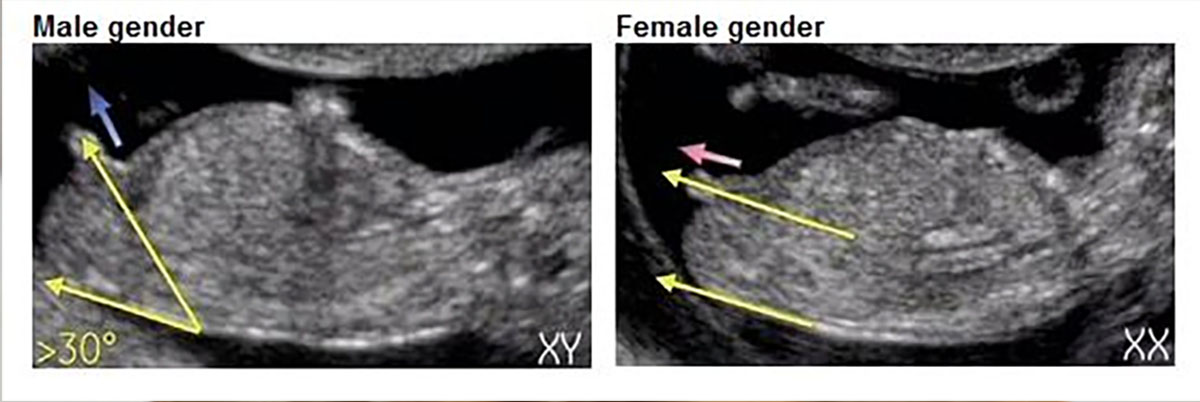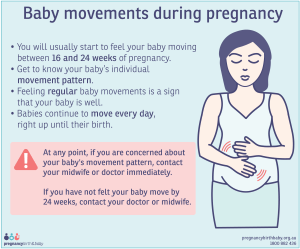When can you tell the sex of a baby during an ultrasound around 18-20 weeks of pregnancy. By this stage, the genitals are usually developed enough to be visible on the scan.
Knowing the sex of the baby can be an exciting moment for expecting parents as they prepare for their new arrival. It allows them to start planning, choosing names, and imagining the future with their child. Additionally, finding out the baby’s sex can also help with bonding and connecting with the little one even before birth.
The joy of anticipating whether it will be a boy or a girl adds to the excitement and wonder of pregnancy.
Early Predictions: Myths And Facts
Discover the truth behind predicting the sex of a baby early on. Learn about the myths and facts surrounding this common curiosity. Understand when it’s possible to determine the gender of a baby with accuracy.
Early Predictions: Myths and Facts Old Wives’ Tales In many cultures, people have relied on old wives’ tales to predict the sex of a baby. These beliefs have been passed down through generations, but their accuracy is often questionable. One common myth is that carrying the baby high means it’s a girl, while carrying low indicates a boy.
Another myth suggests that a fast heartbeat means it’s a girl, and a slower heartbeat indicates a boy. These beliefs are not backed by scientific evidence but continue to intrigue expectant parents. Scientific Basis On the other hand, there are scientifically backed methods for predicting the sex of a baby.
One such method is ultrasound, which can typically determine the baby’s sex around 18-20 weeks into the pregnancy. This non-invasive procedure is considered highly accurate and is often used to confirm the baby’s sex. Another scientific approach is non-invasive prenatal testing (NIPT), which analyzes the baby’s DNA in the mother’s blood.
This test can accurately determine the baby’s sex as early as 10 weeks into the pregnancy. However, it’s important to note that NIPT is usually recommended for high-risk pregnancies and may not be available to all expectant parents. In conclusion, while old wives’ tales may be fun to consider, they lack scientific credibility. For accurate predictions, ultrasound and NIPT are the most reliable methods for determining the sex of a baby.

Understanding Genetics, can you tell the sex of a baby
Discovering the sex of a baby through genetics is possible around the 20th week of pregnancy. Genetic testing can determine the baby’s gender accurately, providing expectant parents with this exciting information. Understanding genetics allows for early insights into the baby’s development.
Xy Chromosome Determination
When it comes to determining the sex of a baby, genetics plays a crucial role. In humans, the sex of a baby is determined by the presence of either an X or Y chromosome. If the sperm carries an X chromosome, the baby will be female, but if it carries a Y chromosome, the baby will be male.
Inheritance Patterns
Understanding the inheritance patterns of sex chromosomes is crucial in determining the sex of a baby. In humans, females have two X chromosomes, while males have one X and one Y chromosome. Therefore, if a baby inherits an X chromosome from both parents, it will be female, and if it inherits an X chromosome from its mother and a Y chromosome from its father, it will be male.
In addition, the inheritance of sex-linked genetic disorders such as hemophilia and color blindness follows specific patterns. These disorders are linked to the X chromosome and are more common in males, who only have one X chromosome. Females, on the other hand, have two X chromosomes, so they are less likely to inherit these disorders. Understanding genetics is essential in determining the sex of a baby.
By knowing the inheritance patterns of sex chromosomes and sex-linked disorders, parents can better prepare for the arrival of their child. With advances in technology, determining the sex of a baby has become easier and can now be done as early as 9 weeks into the pregnancy through non-invasive prenatal testing.
First Trimester Clues
During the first trimester, clues indicating the sex of a baby are not yet visible. Typically, the baby’s sex can be determined via ultrasound around 18-20 weeks into the pregnancy. This is when the genitalia become more developed, allowing for identification.
clues sex of the baby. These clues range from ultrasound snub theory that can offer insights into the baby’s gender.
Ultrasound Possibilities
ultrasounds can sometimes reveal the sex of the baby. However, it’s not always reliable at this early stage.
Nub Theory Explained
nub theory angle of the genital tubercle in the baby’s ultrasound. This theory suggests that the angle boy or a girl.
Non-invasive Prenatal Testing (nipt)
Non-Invasive Prenatal Testing (NIPT) is a cutting-edge technique that allows expectant parents to determine the sex of their baby with a high degree of accuracy and without the need for invasive procedures. This advanced form of prenatal testing has revolutionized the way we can identify the sex of a baby, providing a safe and reliable alternative to traditional methods.
Testing Process
NIPT involves a simple blood draw from the mother, which is then analyzed to detect traces of fetal DNA. This non-invasive procedure poses minimal risk to both the mother and the baby, making it a popular choice for prenatal sex determination.
Accuracy And Timing
NIPT offers an impressive level of accuracy in determining the sex of the baby, with a reported accuracy rate of over 99%. The test can typically be performed as early as 10 weeks into the pregnancy, providing expectant parents with early and reliable information about the sex of their baby.
Anatomy Scan: The 20-week Ultrasound
At the 20-week ultrasound, it is often possible to determine the sex of the baby. This scan, known as the anatomy scan, provides a detailed look at the baby’s development, including the sex organs. It’s an exciting milestone for many expectant parents.
Anatomy Scan: The 20-Week Ultrasound The 20-week ultrasound, also known as the anatomy scan, is a crucial milestone in pregnancy. It’s during this scan that many parents eagerly anticipate finding out the sex of their baby. However, the anatomy scan offers much more than just the opportunity to know the baby’s gender.
What To Expect
During the 20-week ultrasound, the healthcare provider will conduct a detailed examination of the baby’s anatomy. This includes assessing the baby’s vital organs, limbs, brain, and overall growth. Additionally, the ultrasound can provide valuable information about the placenta, amniotic fluid levels, and the mother’s cervix.
Limitations And Considerations
While the 20-week ultrasound is an essential diagnostic tool, it’s important to note that determining the baby’s sex isn’t always foolproof. Factors such as the baby’s position or the clarity of the images can affect the accuracy of gender determination. It’s also crucial to approach the anatomy scan with the understanding that its primary purpose is to assess the baby’s health and development, rather than solely for determining gender. Overall, the 20-week ultrasound provides a comprehensive view of the baby’s well-being and development, offering parents an exciting glimpse into their baby’s world.
Blood Tests And Hormone Levels
Blood tests can determine hormone levels that indicate the sex of a baby as early as 10 weeks into pregnancy. These tests measure the levels of testosterone and estrogen, providing an accurate prediction of the baby’s gender.
Understanding The Indicators
Blood tests analyze hormone levels to determine the sex of a baby. These tests can detect specific hormones that indicate the sex of the fetus accurately.
Relevance To Gender Prediction
Blood tests are highly relevant to predicting the gender of a baby. Hormone levels provide a clear indication of whether the baby is male or female.
Blood tests during pregnancy can identify hormone levels that vary depending on the baby’s sex. These tests offer a reliable method for determining the sex of the baby before birth.
Amniocentesis And Chorionic Villus Sampling
Amniocentesis and Chorionic Villus Sampling (CVS) are two procedures that can determine the sex of a baby during pregnancy. These procedures are typically performed between 10 to 20 weeks of pregnancy, and are used to detect genetic abnormalities and disorders in the developing fetus.
Procedures And Risks
Amniocentesis involves the insertion of a thin needle through the mother’s abdomen and into the amniotic sac, where a small amount of amniotic fluid is extracted and analyzed for chromosomal abnormalities. The procedure takes about 30 minutes, and results are typically available within two weeks.
CVS, on the other hand, involves the removal of a small piece of tissue from the placenta, which is then analyzed for genetic abnormalities. The procedure can be performed through the cervix or through a needle inserted into the abdomen. Results are typically available within a week.
Both procedures carry a small risk of miscarriage, with rates ranging from 1 in 200 to 1 in 400 for amniocentesis, and 1 in 100 to 1 in 200 for CVS. Other risks include infection, bleeding, and damage to the fetus.
Gender Determination Accuracy
Both amniocentesis and CVS are highly accurate methods of determining the sex of a baby, with rates of accuracy exceeding 99%. However, it is important to note that these procedures are not performed solely for the purpose of determining gender, and are typically reserved for cases where there is a known risk of genetic abnormalities or disorders.
If you are interested in determining the sex of your baby, non-invasive prenatal testing (NIPT) is a safer and more accurate alternative. NIPT involves a simple blood test that can detect fetal DNA in the mother’s blood, and can accurately determine the sex of the baby as early as 9 weeks into pregnancy.
If you are interested in determining the sex of your baby, non-invasive prenatal testing (NIPT) is a safer and more accurate alternative.
Psychological Impact Of Knowing Baby’s Sex, Parental Bonding
Learning the sex of the baby can enhance parental bonding, allowing parents to connect with their child on a deeper level and start visualizing their future together.
Gender Expectations
Knowing the baby’s sex might inadvertently lead to the formation of gender expectations. It can influence the way parents and others interact with the child and may affect the child’s development.
Cultural Significance And Gender Reveal Trends
The cultural significance of determining the sex of a baby and the subsequent gender reveal has evolved over time, reflecting the changing social and cultural norms. In today’s modern society, the gender reveal has become an eagerly anticipated event, celebrated in various ways across different cultures and regions. Let’s explore the global perspectives and modern celebrations surrounding the cultural significance and gender reveal trends.
Global Perspectives
Cultural customs and traditions play a crucial role in determining the timing and significance of revealing a baby’s gender. In some cultures, the gender reveal happens during special ceremonies or rituals, while in others, it is simply shared among close family and friends. The diverse global perspectives offer insight into the unique ways in which the gender of a baby is celebrated and shared.
Modern Celebrations
In today’s society, gender reveal parties and events have gained popularity, often involving creative and elaborate methods to announce the baby’s sex. From colored smoke and balloons to themed cakes and confetti, modern celebrations have become a reflection of individual creativity and personal expression. The modern approach to gender reveals showcases the evolving trends and the desire to make the announcement a memorable and joyous occasion for the parents, family, and friends.

Ethical Considerations
Ethical considerations arise when determining the sex of a baby during pregnancy. It is important to consider the implications of such tests, as they may lead to gender bias and selective abortions.
Sex Selection, Impact On Society
Ethical considerations play a crucial role in determining the appropriate time to determine the sex of a baby. This decision has implications that go beyond just the excitement of knowing the gender. In some cultures, gender preference can lead to societal issues. It’s important to consider the ethical implications of sex selection and its impact on society.
Sex Selection
Sex selection raises ethical concerns as it can lead to gender imbalance in society. It can perpetuate stereotypes and discrimination. Parents should carefully consider the implications of choosing the sex of their child.
Impact On Society
The practice of sex selection can have far-reaching consequences on society. It can affect the overall gender ratio, leading to societal issues such as increased competition for marriage partners. It’s crucial to approach sex determination with sensitivity and awareness.

Can You Find Out The Gender At 12 Weeks?
Yes, it is possible to determine the gender of the baby at 12 weeks through ultrasound.
What’s The Earliest They Can Tell The Gender Of A Baby?
Gender can usually be determined through ultrasound at around 18-20 weeks of pregnancy.
What Are Early Signs Of Having A Boy?
Some early signs of having a boy include a lower fetal heart rate, carrying the baby lower, and experiencing less severe morning sickness.
In Which Week Is Baby Gender Developed?
Baby’s gender typically develops around week 12 to 16 of pregnancy.
Conclusion
Determining a baby’s sex is exciting yet uncertain. Various methods offer clues, but accuracy varies. Patience and consultation with professionals can provide reliable answers. Understanding the options and timing is essential for accurate results. Stay informed and enjoy the journey of discovering your baby’s gender.
“When can you tell the sex of a baby, when can you tell the sex of a baby, when can you tell the sex of a baby, when can you tell the sex of a baby, tell the sex of a baby “





